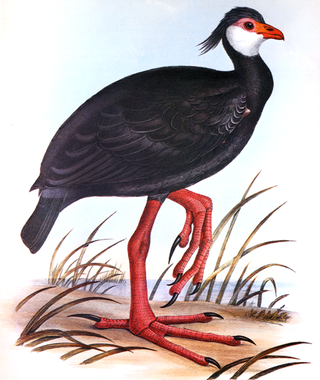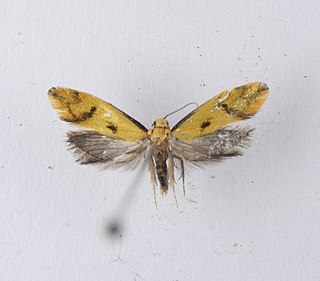
Robert Swinhoe FRS was an English diplomat and naturalist who worked as a Consul in Taiwan. He catalogued many Southeast Asian birds, and several, such as Swinhoe's pheasant, are named after him.

George Robert Gray was an English zoologist and author, and head of the ornithological section of the British Museum, now the Natural History Museum, in London for forty-one years. He was the younger brother of the zoologist John Edward Gray and the son of the botanist Samuel Frederick Gray.
Professor Philip MacDonald Sheppard, F.R.S. was a British geneticist and lepidopterist. He made advances in ecological and population genetics in lepidopterans, pulmonate land snails and humans. In medical genetics, he worked with Sir Cyril Clarke on Rh disease.

Thomas Hornsey Bell FRS FLS was an English zoologist, dental surgeon and writer, born in Poole, Dorset, England.

Sir Jack Edward Baldwin was a British chemist. He was a Waynflete Professor of Chemistry at the University of Oxford (1978–2005) and head of the organic chemistry at Oxford.

Sir Edward Bagnall Poulton, FRS HFRSE FLS was a British evolutionary biologist, a lifelong advocate of natural selection through a period in which many scientists such as Reginald Punnett doubted its importance. He invented the term sympatric for evolution of species in the same place, and in his book The Colours of Animals (1890) was the first to recognise frequency-dependent selection. He is remembered for his pioneering work on animal coloration and camouflage, and in particular for inventing the term aposematism for warning coloration. He became Hope Professor of Zoology at the University of Oxford in 1893.

Sir Arthur William Hill was Director of the Royal Botanic Gardens, Kew, and a noted botanist and taxonomist.
Prays ducalis is a species of moth in the family Praydidae. It was described by English entomologist Edward Meyrick in 1914 based a single specimen collected in Sri Lanka.
Prays erebitis is a species of moth in the family Praydidae. It was described by English entomologist Edward Meyrick in 1914 based on two specimens collected in Ootacamund, India.
Leonard Harrison Matthews FRS was a British zoologist, especially known for his research and writings on marine mammals.

Adam Sedgwick FRS was a British zoologist and Professor of Zoology and Comparative Anatomy, Imperial College, London, and a great nephew of the renowned geologist Adam Sedgwick.
Joseph Stanley Mitchell, CBE, FRS, FRCP was a British radiotherapist and academic. He was Regius Professor of Physic at the University of Cambridge from 1957 to 1975.

Orocrambus aethonellus is a moth in the family Crambidae. It was described by Edward Meyrick in 1883. It is endemic to New Zealand. O. aethonellus has been recorded from the South Island. The habitat consists of sandhills and bogs at sea level, up to altitudes of about 1,200 meters.

Orocrambus callirrhous is a moth in the family Crambidae. It was described by Edward Meyrick in 1883. It is endemic to New Zealand. It has been recorded from the eastern and central part of the South Island and the coast near Wellington and Whangārei on the North Island.

Glaucocharis leucoxantha is a moth in the family Crambidae. It was described by Edward Meyrick in 1882. It is endemic to New Zealand.

Russell Edward Morris is a British chemist and Bishop Wardlaw Professor of Chemistry at the University of St Andrews since 2016. He played first-class cricket while he was a student at the University of Oxford, and also represented the university in association football playing in Varsity matches at various venues, including Wembley Stadium and Highbury.
Peter Bryan Conrad Matthews was a British physiologist who made particular contributions to the study of muscle spindles. He was elected as fellow of the Royal Society in 1973. He was the Professor of Sensorimotor Physiology at the University of Oxford and a fellow of Christ Church.
Canon Frederick Meyrick was a Church of England clergyman and author who served as Secretary of the Anglo-Continental Church Society for more than forty years.

Tingena actinias is a species of moth in the family Oecophoridae. It is endemic to New Zealand and is found on the North and South Islands. The larvae of this species are leaf litter feeders. The preferred habitat of this species is shrubland and it has also been observed in gumland heaths and in beech forest.

Edosa pyriata is a moth in the family Tineidae. The species was first identified in 1917 by English entomologist Edward Meyrick, who is considered to have laid the foundation for the identification of microlepidoptera. Meyrick donated his collection of microlepidoptera to the British Museum, where the type specimen is now located.













